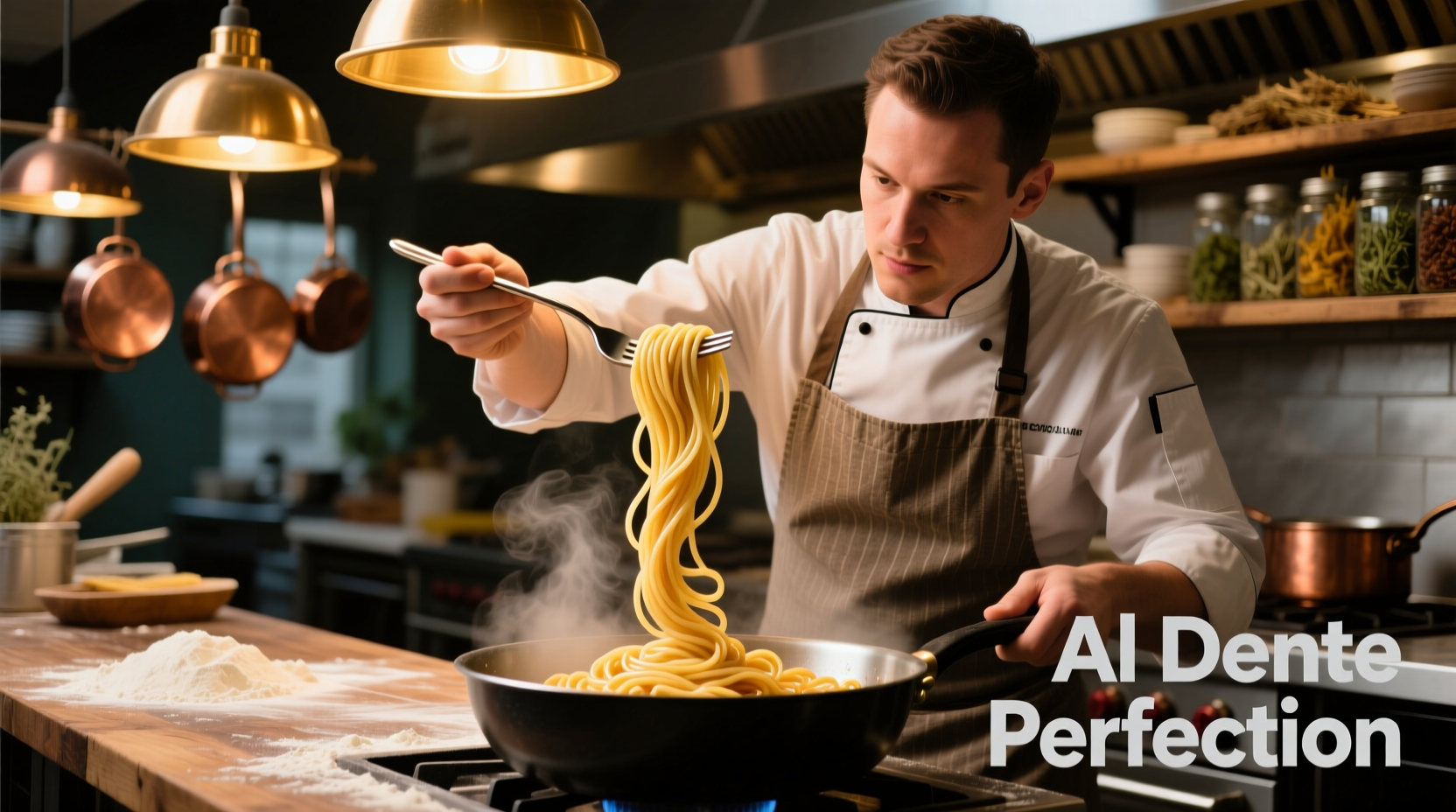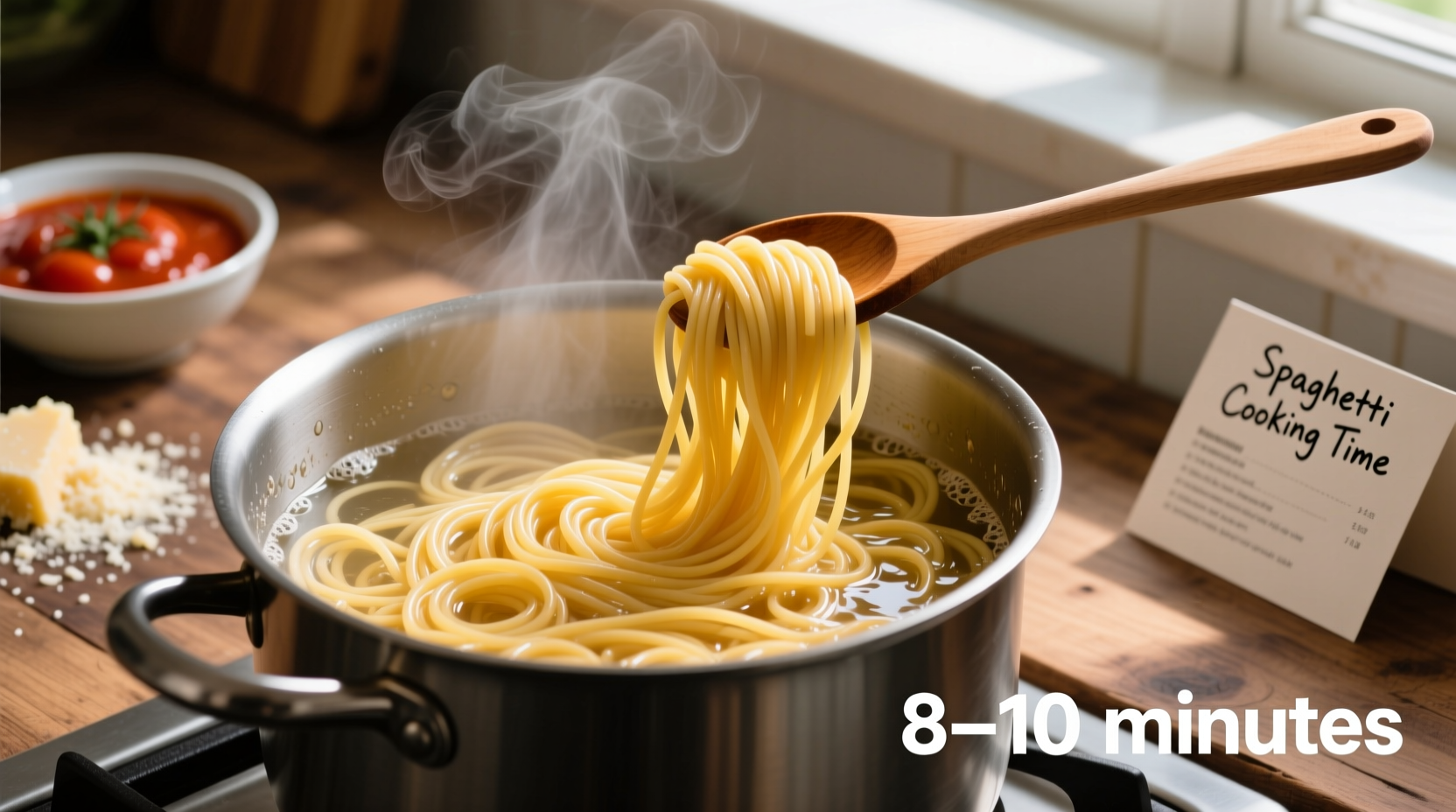Most dried spaghetti noodles cook perfectly in 8-12 minutes, with 10 minutes being the sweet spot for ideal al dente texture. Start testing at 8 minutes and remove from heat when tender with slight resistance in the center.
Getting spaghetti cooking time right separates a restaurant-quality meal from a mushy disaster. As a professional chef who's cooked thousands of pasta portions, I've seen how precise timing transforms simple ingredients into extraordinary dishes. Whether you're a beginner or looking to refine your technique, this guide delivers the exact timing information you need with professional insights you won't find elsewhere.
The Science Behind Perfect Spaghetti Timing
Spaghetti cooking time isn't arbitrary—it's a precise chemical process where starch gelatinization and protein denaturation occur simultaneously. When spaghetti hits boiling water, two critical transformations happen:
- Starch granules absorb water and swell, creating the pasta's structure
- Gluten proteins unravel and set, providing the characteristic "bite"
Undercook by even 30 seconds and you'll have chalky centers; overcook by the same amount and you'll face limp, unappetizing strands. The ideal window is remarkably narrow—typically just 2-3 minutes for most dried spaghetti.
| Pasta Brand | Recommended Time | Al Dente Range | Texture Notes |
|---|---|---|---|
| Barilla | 8-10 minutes | 8:30-9:30 | Firm center, slightly elastic |
| De Cecco | 10-12 minutes | 10-11 | Traditional Italian firmness |
| Ronzoni | 7-9 minutes | 7:30-8:30 | Softer texture, American preference |
| Whole Wheat | 9-11 minutes | 9:30-10:30 | Denser, nuttier flavor profile |
This comparison of spaghetti cooking times across major brands reveals why package instructions alone aren't enough. As documented by the Grain Foods Foundation, different manufacturing processes create distinct cooking behaviors even among standard dried spaghetti varieties.
Your Step-by-Step Spaghetti Cooking Timeline
Preparation Phase (0-2 minutes)
Start with the right water-to-pasta ratio—4-6 quarts of water per pound of spaghetti. This prevents sticking and ensures even cooking. Add 1-2 tablespoons of coarse salt once the water reaches a rolling boil (never before, as this can damage your pot). The salt concentration should mimic seawater—about 1.5% salinity—which properly seasons the pasta from within.

Cooking Phase (2-12 minutes)
When adding spaghetti to boiling water:
- Gently lower strands into water while swirling with tongs (prevents clumping)
- Set timer immediately for 8 minutes (your testing point)
- Stir occasionally during cooking to prevent sticking
- Begin testing at 8 minutes by removing a strand, cooling briefly, and biting
Perfect al dente spaghetti shows these characteristics:
- Uniform color throughout (no white core)
- Slight resistance in the very center
- No hard, gritty center
- Flexible but maintains shape
Finishing Phase (12-14 minutes)
When your spaghetti reaches ideal doneness:
- Reserve 1 cup of starchy pasta water before draining
- Drain immediately—don't rinse (removes essential starch for sauce adhesion)
- Return to pot with ¼ cup reserved water and your sauce
- Toss over low heat for 1-2 minutes to finish cooking in the sauce
This final minute in the sauce—called "mantecatura" in Italian cooking—is crucial. The pasta absorbs flavors while the starch in the water creates an emulsified, silky sauce that clings perfectly to each strand.
Contextual Factors That Change Cooking Time
Several variables require timing adjustments beyond the standard 8-12 minute range:
- Altitude adjustments: Above 3,000 feet, increase time by 25% as water boils at lower temperatures (per USDA Food Safety guidelines)
- Fresh vs. dried: Fresh spaghetti cooks in 2-4 minutes—watch closely as it's ready when it floats
- Water hardness: Hard water can add 1-2 minutes to cooking time due to mineral content
- Sauce pairing: Heartier sauces like Bolognese benefit from slightly firmer pasta (1 minute less), while delicate oil-based sauces work best with standard timing
Troubleshooting Common Spaghetti Mistakes
"My spaghetti is too soft"
This usually means you've exceeded the ideal cooking window. Next time:
- Start testing 1 minute earlier than package instructions
- Reduce heat to maintain a gentle simmer, not rolling boil
- Remember that pasta continues cooking after draining
"My spaghetti is still hard in the center"
Undercooked pasta typically results from:
- Insufficient water volume (use at least 4 quarts per pound)
- Adding pasta to water that wasn't at a full boil
- Not stirring during the first 2 minutes of cooking
"My spaghetti sticks together"
Prevent clumping by:
- Using adequate water volume
- Stirring immediately after adding pasta
- Never adding oil to cooking water (creates coating that prevents sauce adhesion)
Professional Chef's Timing Secrets
After years in professional kitchens, I've developed these timing techniques that guarantee perfect results:
- The 80% Rule: Start testing when timer reaches 80% of package time (e.g., 6:24 for 8-minute pasta)
- Twist Test: Grab a strand with tongs and twist—if it bends without breaking but offers resistance, it's ready
- Water Temperature Check: Maintain 195-205°F (90-96°C)—boiling too vigorously overcooks exterior before interior cooks
- Salt Timing: Add salt after water boils to prevent pitting, but before adding pasta for proper seasoning
Remember that perfect spaghetti timing varies slightly based on your specific stove, pot material, and even the day's humidity. The most reliable method remains the bite test—trust your senses over the clock.











 浙公网安备
33010002000092号
浙公网安备
33010002000092号 浙B2-20120091-4
浙B2-20120091-4